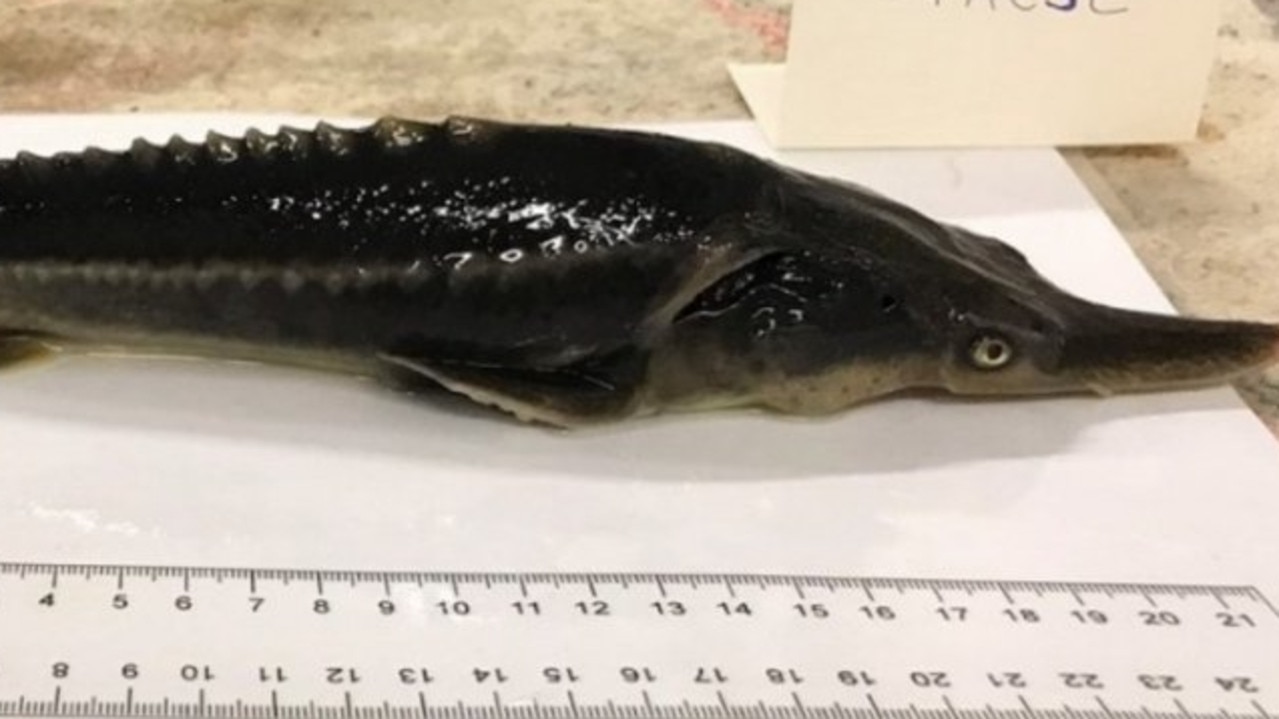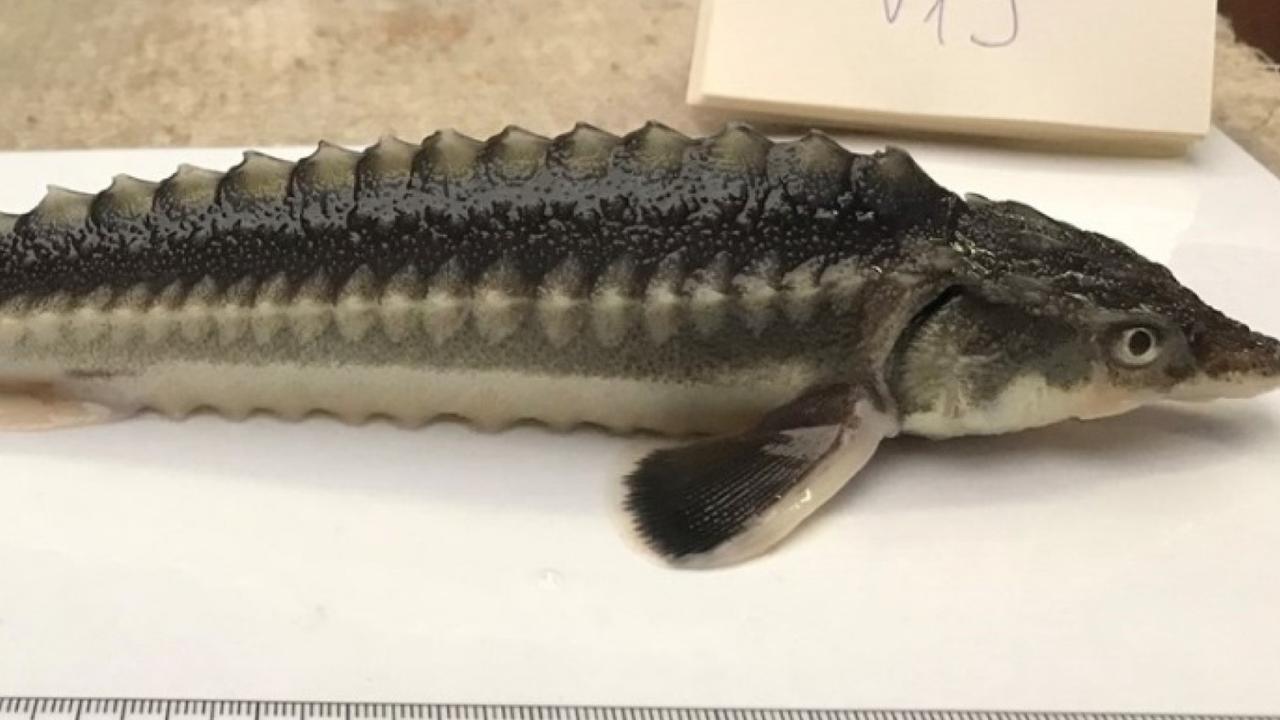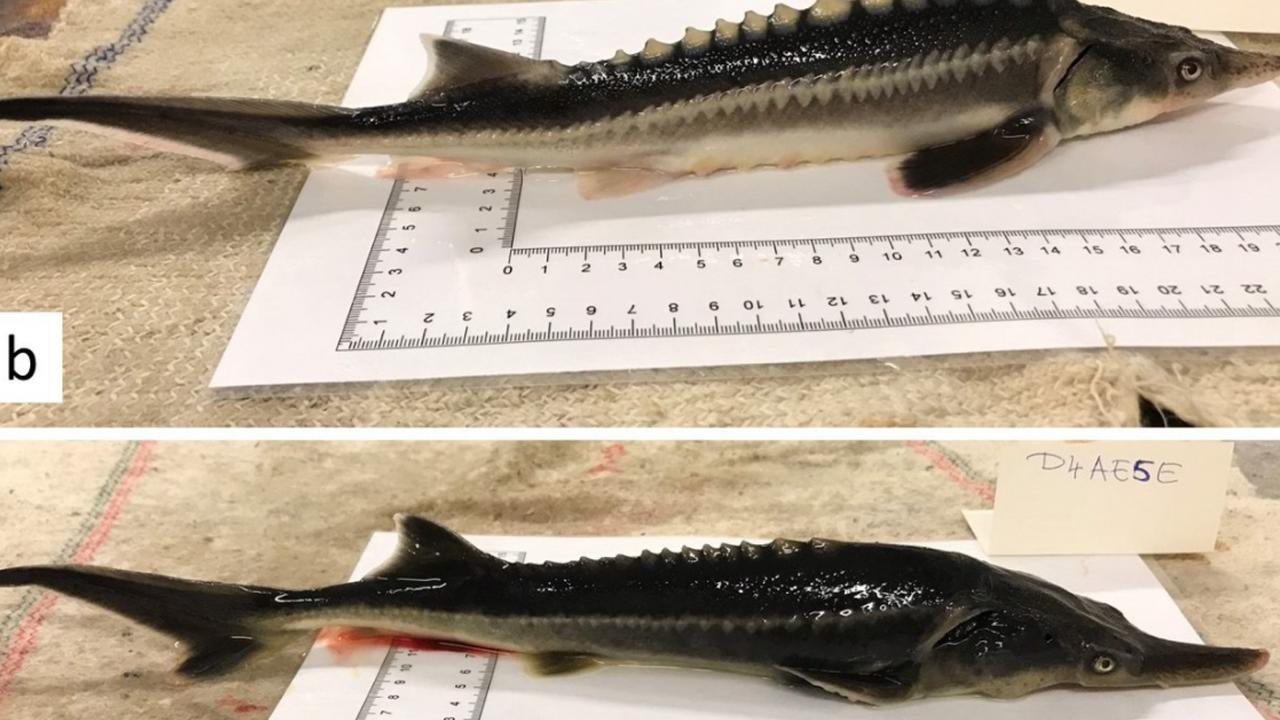Scientists accidentally create new hybrid fish breed from sturgeon, paddlefish
Scientists didn’t think the two threatened species would be able to breed together but turns out they were wrong. Meet the sturddlefish.
A team of Hungarian scientists have accidentally created a new type of fish by breeding two endangered creatures that date back to prehistoric times.
Sperm from an American paddlefish was placed near eggs from a Russian sturgeon in a lab setting in an effort to coax the sturgeon eggs into reproducing asexually.
Many fish can reproduce through a process known as gynogensis, where all the genetic information is inherited from the mother.
The sperm is still required but doesn’t pass on genetic code.
In the recent experiment it appears DNA was passed on however.
RELATED: How ultra-black fish hide in the sea

RELATED: Rhinos drown in floods at national park
Russian sturgeon are a critically endangered bony fish whose eggs are touted as the most valuable type of caviar, part of the reason for their declining population.
They typically live on the sea floor and eat other fish and crustaceans.

RELATED: Fish with ‘luscious’ human lips goes viral
American paddlefish, like sharks, are made up of cartilage and not bone.
They favour large, slow flowing freshwater rivers (mainly found in the Mississippi River system) and feed more like some whales by swimming around with their mouths open, raking up microscopic organisms in their path.
The American paddlefish is a protected species, while the only other species of the fish, the Chinese paddlefish, is believed to have recently become extinct.

RELATED: Shark’s 50-minute battle with whale
It’s understood the sturgeon and paddlefish shared an ancestor more than 184 million years ago, and they haven’t changed much in all that time.
The two fish are known as “living fossils” because they are so similar to their ancestors.
But scientists believed they were now too evolved and divergent to reproduce.
The team has now shown that’s not the case, even if they did it accidentally.
The new species has been named the sturddlefish.

Eight sturddlefish had their genes analysed, and while some appear genetically closer to sturgeon, others are a near perfect mix of sturgeon and paddlefish DNA.
The sturddlefish inherits the sturgeon’s mouth and its taste for other animals, while some have gained slightly smaller versions of the paddlefish’ fins and snout.
But like other hybrid animals such as mules and ligers, the sturddlefish are thought to be incapable of reproducing themselves.
Some of the fish bred in the study are still alive, and it’s thought they could even live as longer as paddlefish, which have been known to survive around 55 years.
The team of researchers, predominantly from Hungary with the exception of one based at Kentucky State University in the USA, published their findings in a recent edition of peer-reviewed genetics and genomics journal Genes.



